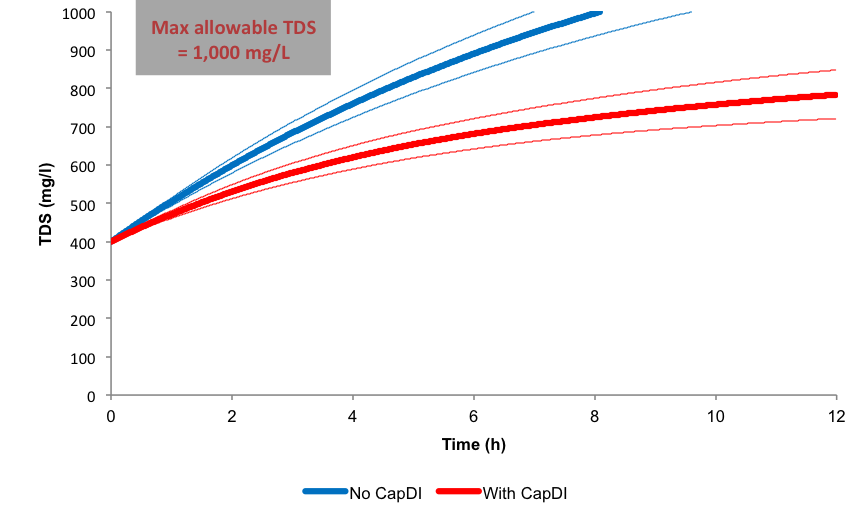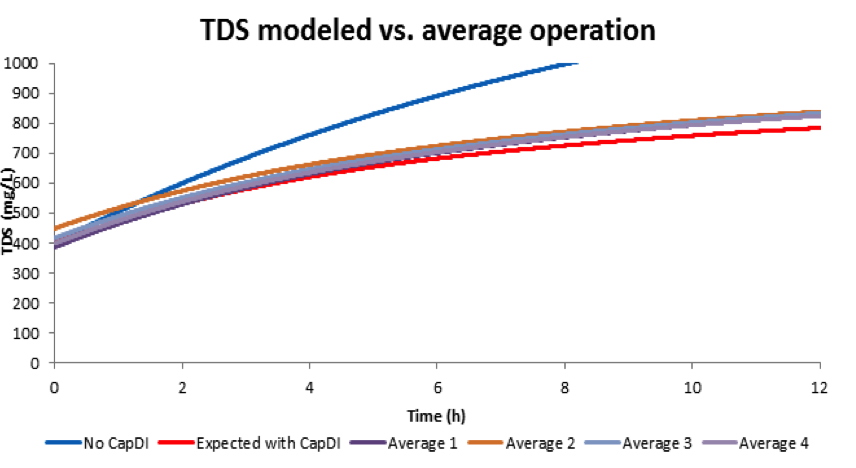01 Mar CASE STUDY: HIGH TEMP TDS REMOVAL IN COMMERCIAL LAUNDRY
Voltea’s capacitive deionization (CapDI©) technology was specified for removal of total dissolved solids (TDS) at laundering temperatures to enable maximum recovery of recycled water in a commercial laundry.
Georgia, US, March 2014
Voltea’s capacitive deionization (CapDI©) technology was specified for removal of total dissolved solids (TDS) at laundering temperatures to enable maximum recovery of recycled water in a commercial laundry.
Experienced commercial laundry operators know the limiting factor to using recycled water in a laundry facility is removing total dissolved solids (TDS) from the water. Most operators agree the presence of TDS above 750 to 1,000 ppm will result in gray linens. Voltea’s award-winning CapDI© technology removes TDS from laundry water at the temperatures commercial laundry operators wash linens, 40ºC to 60ºC, so there’s no need to cool the water before removing TDS and no excessive energy costs to reheat before the next wash cycle.
THE CHALLENGE
Facing water shortages like most of the rest of the country, one Georgia municipality imposed a 25,000 gallon per day discharge limit on commercial users as part of an approach to conserving precious potable water resources. The result of this daily discharge limit meant a local commercial laundry operator was constrained to operating their facility for only 8 hours per day until reaching their daily discharge limit of 25,000 US gallons of used laundry water. Growth of their business was constrained to their daily allotment of potable water.
The laundry operator began researching technologies to enable recycling laundry water, while ensuring high quality bright, white linens. Thorough research showed a variety of technologies could do everything necessary to the water to make it suitable for recycling in the laundry except remove the total dissolved solids (TDS) while the water remained at laundering temperatures of 40ºC to 60ºC. The client installed an advanced oxidation process (AOP) to treat the spent laundry water, but still had no way of controlling TDS at laundering temperatures.
TECHNOLOGICALLY ADVANCED FLEXIBLE SOLUTION
Voltea responded to the client’s needs by providing an IS4 CapDI© unit within three weeks. Occupying an incredibly small footprint of approximately 1 square yard on the laundry floor, Voltea’s IS4 removes TDS from the recycle stream at a flow rate of up to 48L/min of recycled water. Moreover, because TDS removal is so effective, Voltea’s IS4 does not need to treat the overall recycle stream; rather, the purified stream from the IS4 is blended into the overall recycle stream to maintain overall TDS below 750ppm. Introduction of the IS4 allowed the operator to expand to 2 shifts/day without exceeding their daily discharge limit on waste water, and removing TDS from the recycle stream ensured superior quality, bright white linens.
PERFORMANCE DATA
It was determined that the water could be recycled until it reached a maximum TDS of 1,000ppm, at which time the water was discharged to drain to prevent graying of linens. Voltea provided the laundry facility with this prediction of how long the water could be used in a recycle loop with, and without, CapDI©, before triggering the discharge required at 1,000ppm TDS (includes a margin of error of ±10%):
Actual TDS levels with, and without, Voltea’s IS4 CapDI© treatment system were then monitored during laundering with recycled water. With each pass through the laundry, the recycled water collected additional TDS as a result of cleaning the linens. Addition of CapDI© technology to the process to control the rise in TDS was predicted to result in more than double the operating time before reaching the discharge limit of 1,000 ppm. Actual performance data revealed TDS control consistent with modeled predictions.
The average actual data results we received from the laundry facility over a 6-month operational time period are as follows:
Impressively, Voltea’s original forecasted model is almost exactly in line with the actual 100 data sets run over 6-months. Use of CapDI® technology is maintaining TDS below the desired threshold, and allowing the operator to run 2+ shifts/day, without exceeding the daily discharge limit of 25,000 gallons.
Of critical importance is the fact that the TDS is being removed from the recycled laundry water at the temperature the laundry operates, meaning there is no need to cool the process water before treating it for TDS removal. Consequently, returning high quality recycled water to the laundering process at temperatures of 40ºC to 60ºC yields an additional 60% savings in energy costs required to heat incoming water.
About Voltea
Voltea has been delivering electrochemical water-conditioning equipment to institutional, commercial and industrial customers for over 6 years. Voltea’s CapDI© systems remove dissolved salts from water using electricity at a lower economic and environmental cost than any other available technology. Voltea was recognized as one of the 21 Technology Pioneers 2013 at the World Economic Forum, listed in the 2011 Global Cleantech 100 and won the best new technology award at the 2010 Global Water Summit.



